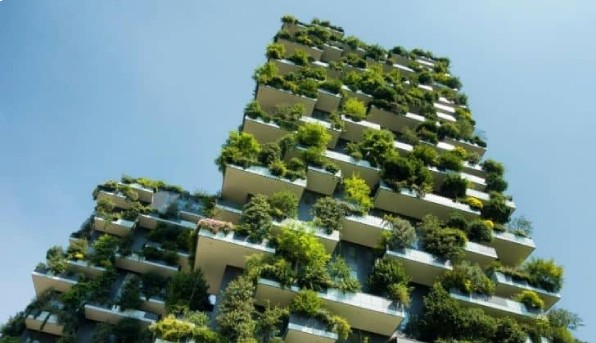Green Building
Green Building Attributes
2nd August 2021

Buildings and real estate developers who have adopted the concept of green buildings have found that the four major attributes of green building designs are augmented ventilation control, improved temperature control, enhanced lighting control, and increased daylighting, have been clearly and significantly correlated with increased levels in productivity. All these factors directly and indirectly affect productivity and comfort levels.
Many people point out that indoor air quality is also associated with improved productivity and health in workplaces and educational settings. This helps explain that the greatest benefits of green building come in the form of benefits for its occupants. Other economic benefits of green buildings are more than 10 times the average initial investment required to design and build a green building. In terms of energy savings alone, these numbers outweigh the average incremental costs associated with environmental friendliness, and their benefits and savings show the true value of sustainable construction, according to construction industry insiders.
When profitability, productivity and environmental concerns are inextricably linked, home builders and real estate developers can choose between well-designed buildings and that is healthy & efficient. Experts believe that with a 50-year life-cycle investment, green buildings are increasing at a rate of around 40 percent each year, and as global energy costs also rise, the risks of simply doing conventional design are snowballing, as well as the risk of going obsolete has fast become a large.
Overall Approach to Sustainability is by Recognizing Key Areas of Activity:
Site selection and development is an important element of a building. The sustainable sites category discourages development on previously undeveloped lands. Try to minimize the impact of buildings on ecosystems and waterways. Encourage landscaping in appropriate areas. Reward the choice of Intelligent transport systems. Control of rainwater overflow; promotes reduction of erosion, light pollution, heat island effect and construction related pollution.
Buildings are the main users of our drinking water supply. The goal of this category is to promote smarter use of water indoors and outdoors. Water reductions are often achieved through more efficient indoor appliances, devices, accessories, and a water-friendly outdoor landscape.
Energy and Atmosphere category promotes a variety of energy-focused strategies. Energy consumption monitoring, efficient design, and construction. Efficient equipment, systems, and lighting. Use of renewable and clean energy sources generated on site or off site.
During construction and operation, buildings generate large amounts of waste and use large amounts of materials and resources. A list of materials and resources encourages the selection of products and materials that are grown, harvested, produced, and transported in a sustainable way. Promote the reduction, reuse, and recycling of waste, by rewarding the reduction of waste at the source of the product.
It is thought that we spend about 90% of the day indoors. Indoors, the air quality can be much worse than outdoors. The indoor environmental quality category promotes strategies to improve indoor air, as well as access to sunlight and natural visibility, and to improve acoustics.
Most rating systems recognize that many of the environmental impacts of homes are due to their suitability for the location of homes and their communities. The location and connection categories are previously developed, or populated sites and it is recommended to build away from environmentally sensitive areas. Existing infrastructure, community resources, and homes built near transportation, a place that facilitates access to open spaces for walking, physical activity, and outdoor time also are considered.
Most rating systems recognize that a home is truly green only if the people living in it make the most of its capabilities. In the outreach and education category, homebuilders and real estate professionals give owners, tenants and building managers the knowledge and tools they need to understand how to make their homes environmentally friendly and how to do so.
RECOMMENDED

Jali, a traditional architectural element renowned for its beauty and functionality, has evolved...

Green audits are essential tools that provide a comprehensive assessment of an organization's environmental...

Daylighting is a strategic element in sustainable architecture, essential for reducing energy consumption and enhancing...